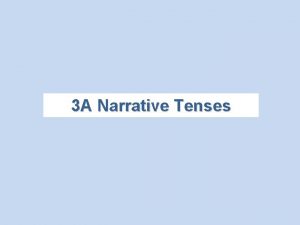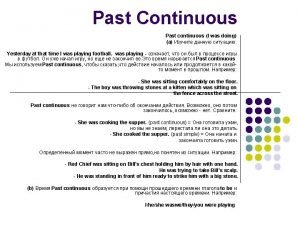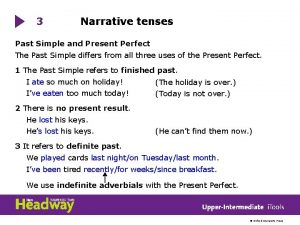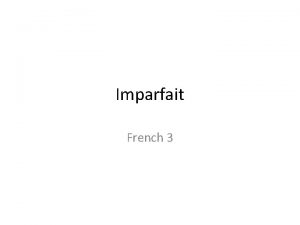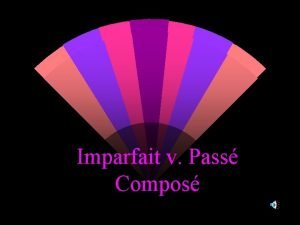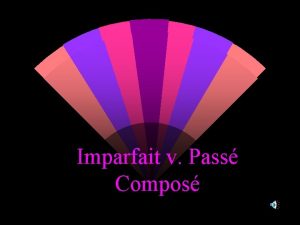Imparfait What is imparfait Imparfait is a past








- Slides: 8

Imparfait

What is imparfait? • Imparfait is a past tense form that is used to describe what things were like. The stem you use to form the imperfect is the nous form of the verb in the present tense without the –ons ending. Example: écrire= écrivons in the nous form so when you take away the –ons you are left with the stem écriv- to which you then add a set of endings.

Imparfait • To describe how things and people • were in the past. • To describe general conditions or to set the scene. • To talk about what used to happen or to tell about repeated habitual • actions • After words that indicate a repeated action the past, like toujours, d’habitude, souvent, tous • les jours, and de temps en temps • To tell what was going on when something else happened To emphasize that you were in the middle of doing something when something else happened, you can use the expression être en train de in the imparfait followed by an infinative. To make a suggestion you can use the expression si on followed by a verb in the imparfait To tell how someone seemed to be, you can use the expression avoir l’air in the imparfait followed by an adjective.

Vs passé composé • To tell what happened • After words that indicate a specific moment in the past like un jour, soudain, tout d’un coup, au moment où, and une fois • After words that indicate in which order a series of events occurred like, d’abord, aprés, ensuite, enfin, and finalement. • To talk about an even that occurred while another action was going on.

How to conjugate imparfait • To form the stem for imparfait, use the nous form of the verb without the –ons ending. . Example: écrire= écrivons in the nous form so when you take away the –ons you are left with the stem écriv- to which you then add a set of endings. • The stem of –ger verbs like manger keeps the –e. • To make imperfect negative, place ne…pas around the verb

Normal Verbs Je Tu Il/Elle/O n Nous Vous Ils/Elles PARLER STEM endings -ais -ait Parl---- -ions -iez -aient

AVOIR J’ avais tu avais Il/elle/on avait nous avions vous aviez Ils/elles avaient

être J’ étais tu étais Il/elle/on était nous étions vous étiez Ils/elles étaient
 3a grammar narrative tenses answers
3a grammar narrative tenses answers Fyne jas
Fyne jas Past simple past perfect past continuous exercises
Past simple past perfect past continuous exercises Past simple past continuous
Past simple past continuous Past continuous past simple past perfect
Past continuous past simple past perfect Past perfect vs past simple vs past continuous
Past perfect vs past simple vs past continuous Past simple past continuous, past perfect examples
Past simple past continuous, past perfect examples Llll progressive form
Llll progressive form Narrative tenses presentation
Narrative tenses presentation
